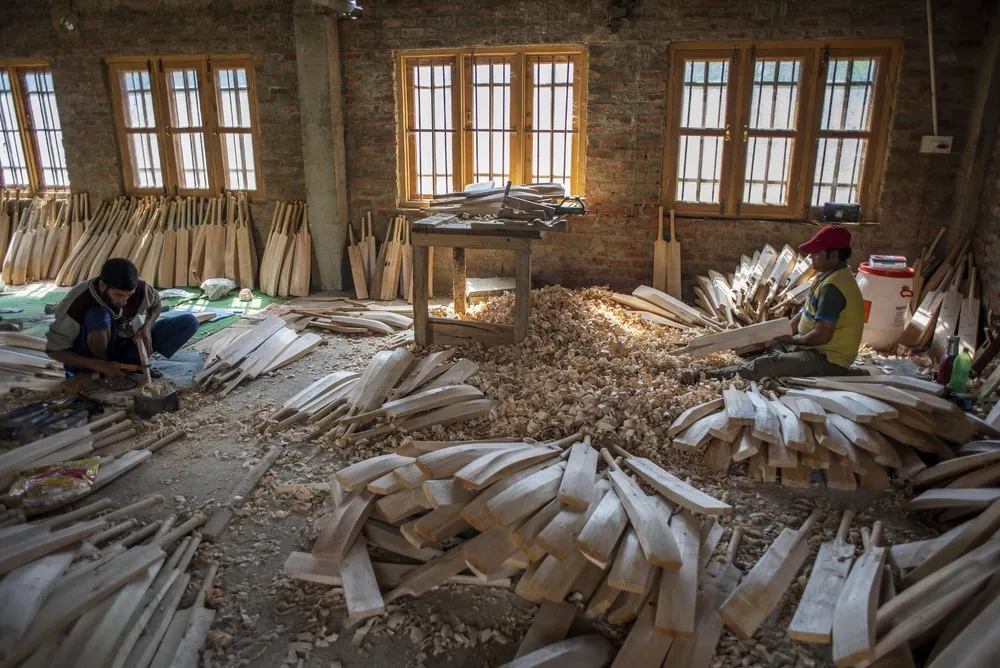|
Kashmiri workers finish cricket bats in a bat factory on October 3, 2023 in Halmullah, 50 km, south of Srinagar, Indian administered Kashmir, India. Kashmiri bat manufacturers thrive due to cricket's popularity, especially ahead of the International Cricket Council (ICC) Cricket World Cup. These willow bats are not only popular locally and in India but also find their way to international markets such as the UK, Australia, Pakistan, Bangladesh, and Sri Lanka. Known for their exceptional quality, durability, and affordability, these bats have their willow roots tracing back to the 1920s when the British introduced the wood to Kashmir. The iconic Kashmir willow bat will debut in 50-over World Cup matches, concluding a 102-year manufacturing legacy in the Valley. The 2023 ODI World Cup in India will also mark the inclusion of Kashmir willow bats in an ICC event for the first time. Cricketers from six nations, including Afghanistan, Bangladesh, Sri Lanka, West Indies, UAE, and Oman, will favor Kashmir willow over traditional English willow. This shift is supported by Kashmir willow's recent presence in T20 World Cups and the IPL. Despite producing cricket bats for over a century, Kashmir's recognition in world cricket is relatively recent, with international players from various countries choosing these bats for the upcoming ICC ODI event hosted by India, commencing on October 5. However, the region faces the challenge of willow scarcity, endangering small-scale producers and the local economy. Kashmiri bat manufacturers are experiencing a surge in sales ahead of the October 5 start of the Cricket World Cup. These Kashmiri willow bats, priced at just US$20 compared to UK-manufactured bats costing US$200, are in high demand. (Photo by Yawar Nazir/Getty Images)
|

